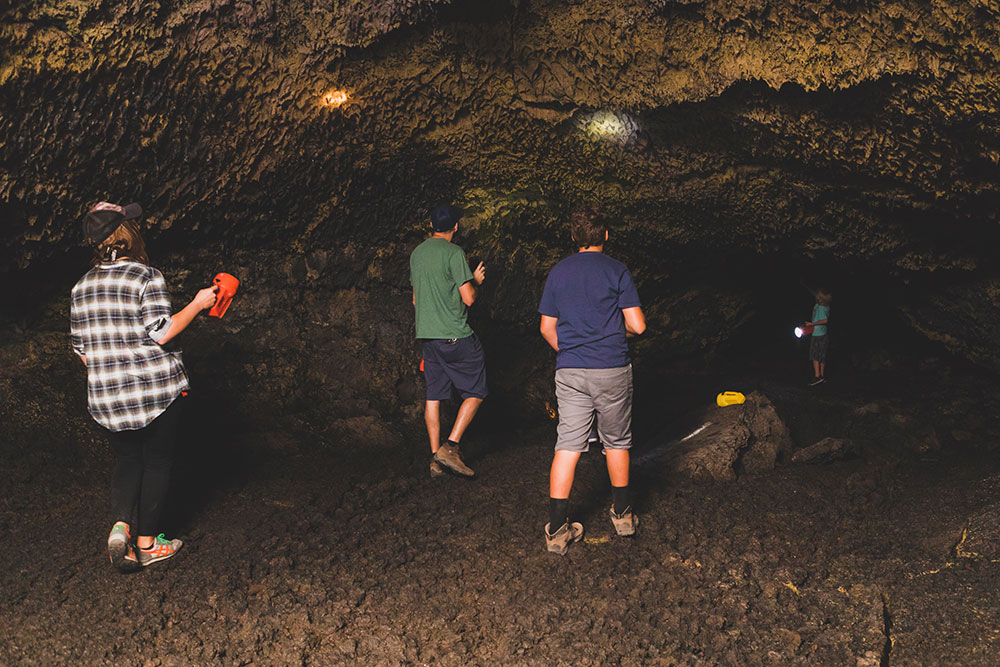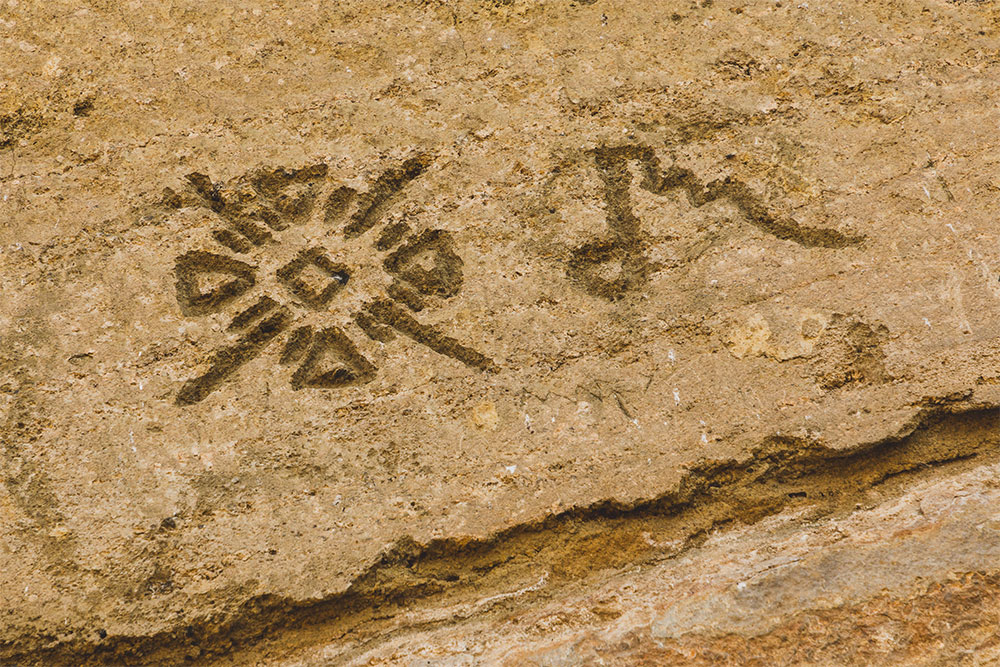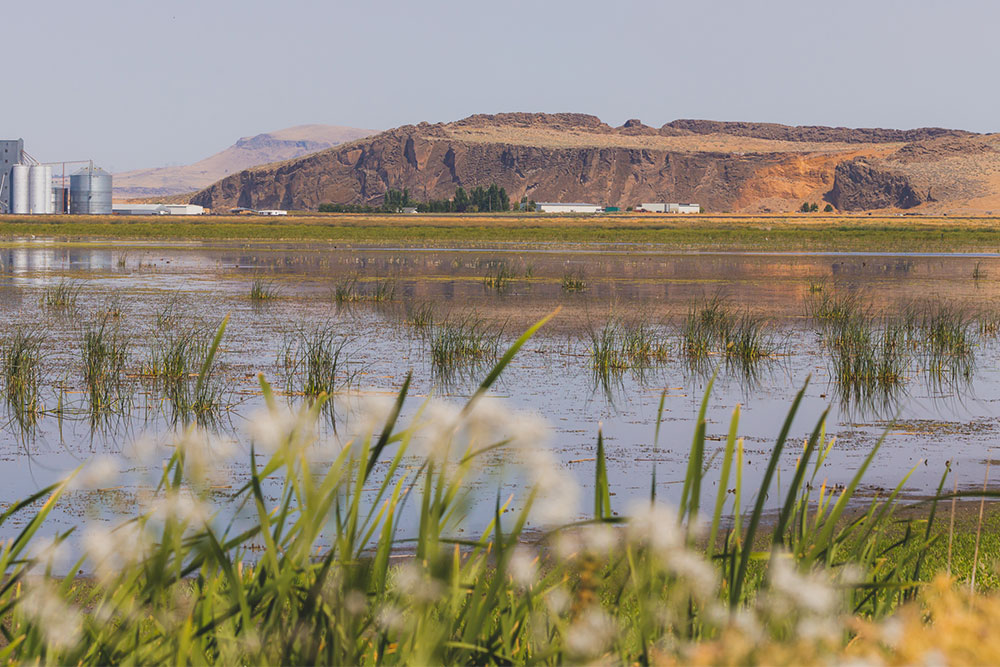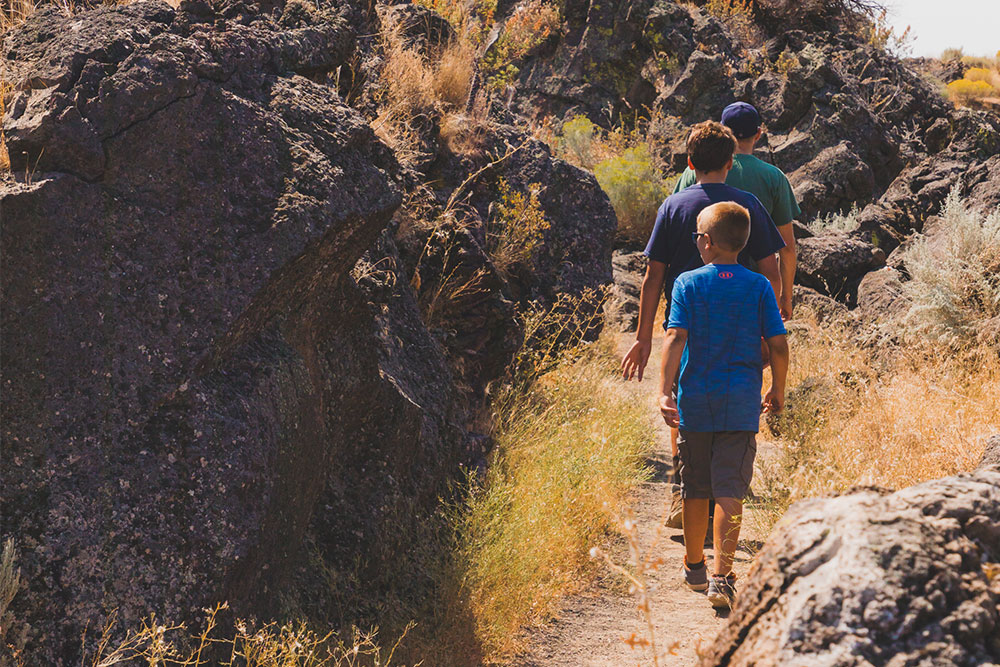Crawl Through A Lava Tube
Lava Beds National Monument has more than 800 lava tube caves, the greatest concentration in North America and is open year-round. In addition, the monument encompasses the main battlefields of the Modoc War of 1872-73 and nearby is the site of the WWII Valor in the Pacific National Monument, a Japanese Internment Camp outside Tulelake, California. The monument also includes Petroglyph Point, one of the largest panels of Native American rock art in the United States. Stop by the wonderful visitor center provides lanterns, flash lights, and bump hats you’ll need to have a great day of exploration.






